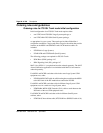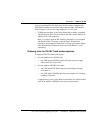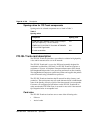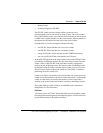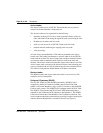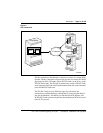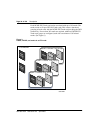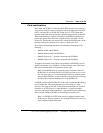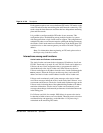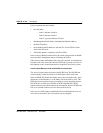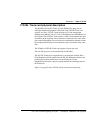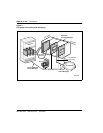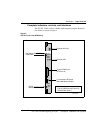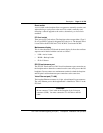
Page 34 of
378
Description
553-3001-202 Standard 1.00 April 2000
Each customer requires one or more dedicated ITG nodes. ITG trunks on the
same ITG node share the same dialing plan and IP network connectivity. ITG
trunks cannot be shared between customers that have independent numbering
plans and IP networks.
It is possible to configure multiple ITG nodes for one customer. This
configuration allows load balancing among multiple Leaders for systems
with more traffic than a single Leader card can support. The configuration of
multiple ITG nodes on one customer requires splitting the dialing plan among
the Leaders. Each Leader must have a distinct range of the dialing plan. This
restriction exists so that a remote gateway can relate a DN with a single IP
address.
Note: For information about engineering an ITG node, please refer to
the Engineering Guidelines section.
Interactions among card functions
Active Leader and Follower card interaction
The Active Leader card controls the assignment of IP addresses for all new
ITG ISL Trunk cards in its node. If a new ITG ISL Trunk card is added as a
Follower, the new Card Configuration data, as programmed in MAT, is
downloaded only to the Active Leader card. When it boots up, the new
Follower card requests its IP address from the Active Leader card through the
protocol. When the Follower cards boot up, they receive their IP
address and Active Leader card IP address from the Active Leader card.
Follower cards continuously send Update messages to the Active Leader
card. These messages inform the Active Leader card of the Followers’ most
recent status and resources. The Active Leader sends Update messages to the
Follower cards, informing them of the updated dialing number to IP address
translation information. Also the Active Leader card continuously sends
messages about changes in the network performance of each destination node
in the dialing plan.
If a Follower card fails (for example, DSP failure), it reports to the Active
Leader that its failed resources are not available. The trunk ports involved are
considered faulty and appear busy to the Meridian 1. Call processing is
maintained on the remaining ITG trunks.



